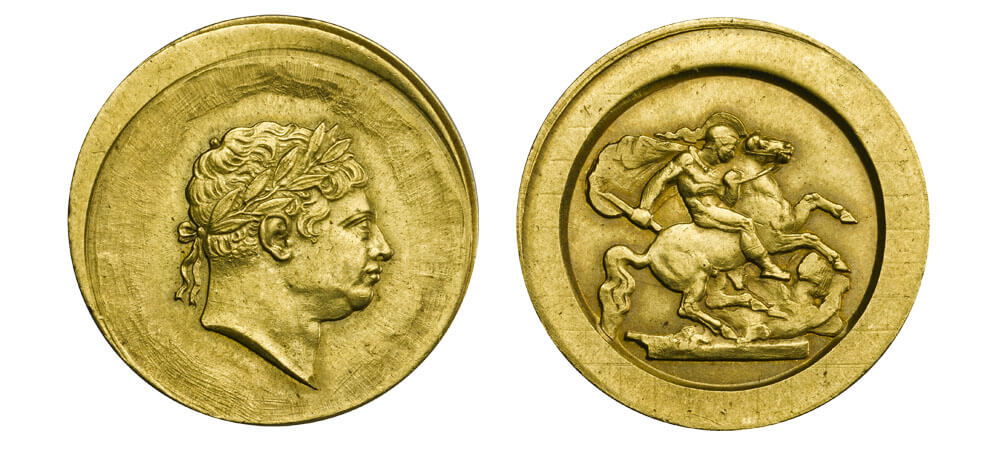Sovereign trial piece
In the summer of 1817, due to currency reform, the twenty-shilling sovereign was revived in place of the twenty-one-shilling guinea, which had been effectively out of circulation for some years. This move marked the resumption of regular production of gold coins by the Royal Mint.
The design was intended to be distinctive, with a neoclassical image of St George and the dragon that captured the stylistic mood of the Regency era. Benedetto Pistrucci, the Italian gem engraver who within a year of employment in the Mint had been tasked with creating a portrait of George III, was given the honour of designing the reverse of the new principal gold coin. The image of St George and the dragon has been part of the mythology of Britain for centuries and was felt to represent the triumph of good over evil. It was perhaps a fitting choice, given the jubilant national spirit after Britain’s victory in the Battle of Waterloo, and that both the King and Prince Regent shared St George’s name. According to Pistrucci’s account, though, the inspiration came from Lady Lavinia Spencer, introduced to him by the famous naturalist Sir Joseph Banks, who Pistrucci claimed had asked him to produce a fashionable Greek inspired model of St George for her husband.

Pistrucci, frustrated with the execution of his previous designs by the engravers in the Mint, mastered the technique of engraving steel himself. When he produced the reverse of the sovereigns it was entirely his own work. For Pistrucci, as for William Wellesley Pole, the artistry and quality of work in the Royal Mint was of upmost importance. Pole worked tirelessly with Pistrucci, providing constant instructions and suggestions for the improvement of the design, and in their own acknowledgment of this difficult work, the initials of both artist and Master were hidden in the design. As is often the case, the design evolved. In this trial piece St George holds a broken lance, a design element which was changed to a sword in 1818. Pistrucci’s design remains an iconic work of art still used on British gold coins over 200 years later.
